Sewing dresses is a whole series of deliberate and 10 times measured steps, until the details are laid out on the table. And when it comes to evening dresses, we proceed to business more meticulously.
The complete process of creating an evening dress is difficult to fit in one article, but there are general recommendations that apply to each dress. Analyzing the main points in sewing, we take as an example a fitted model in the floor on one shoulder and sew a fashionable evening outfit with a removable skirt.
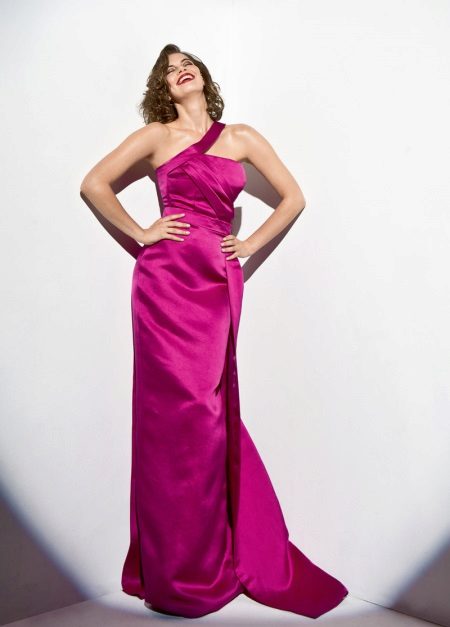
Taking measurements
Since each girl has an individual figure, accurate measurements are needed so that the dress fits perfectly on the figure.
Standard measurements are the semi-circumference of the waist, hips, chest, etc. Sometimes additional measures are needed, for example, to calculate the center of the chest or to take two measurements of the "Breast Volume".
Preparing the pattern
Having the necessary data, we proceed to the creation of the pattern itself. It can be reshaped using graph paper or built in a pattern-building program and printed.
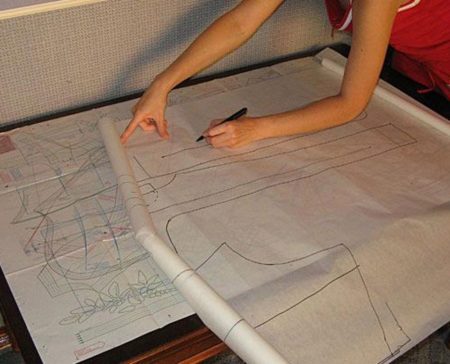
A few tips for preparing the pattern:
- After verifying the correctness of each detail of the dress (backs, shelves, sleeves), it is transferred to a separate dense sheet of paper or cardboard from the main drawing.
- All important lines of tucks, notches, key points are also transferred.
- Before cutting, it is imperative that the connection sections be checked with a centimeter for details. Side seams, shoulder sections should match. Make sure that the volume of the sleeve rounded corresponds to the armhole. Take into account the provided folds.
- Discrepancies are better eliminated on paper than on fabric, so if they are found, then cut off the excess, and glue the missing centimeters with a piece of paper.
- If the pattern is without allowances, be sure to make them on the fabric when cutting.
- Add 1.5 cm to the seams and along the sections, 3.5 cm along the longitudinal sections of the panel of the upper skirt, 4 cm to the hem of the bottom of the dress and upper skirt.
The pattern of our evening dress, built in the RedCafe program, as follows.
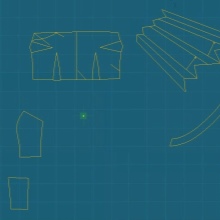
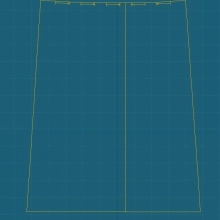
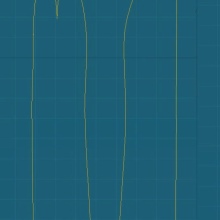
Fabric preparation
The fabric must be taken seriously. It will be a shame if the dress sits or stretches after the first wash.
- Cotton, linen and silk fabrics should be ironed from the wrong side. If the material is skewed, then it should be moistened and slightly pulled.
- Woolen matter needs wet-heat treatment.
- Be sure to inspect the acquired piece of fabric. After seeing the flaws, circle them with soap, so that when cutting these defects get around.
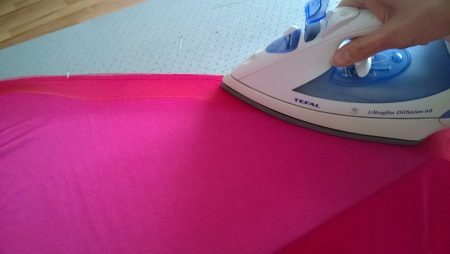
If the fabric is cut unevenly, the edge must be aligned. To do this, pull the transverse thread. A line appears that shows where to cut the fabric.
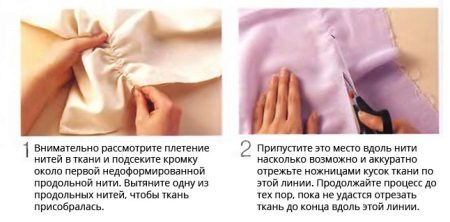
On fabric with a pile or print, place and pattern elements so that the pile is in the same direction - down up. The exceptions are hem and belt.

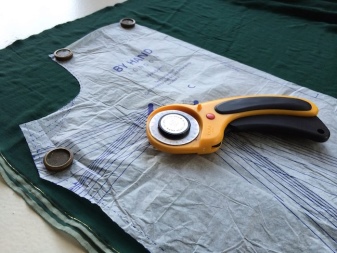
As for our one-piece evening dress, you will need duchesse or a well-shaped dress fabric.

Layout and cut
- Lay the fabric face up.
- Make sure that the shared threads correspond to the directions indicated on the details of the dress pattern.
- On the fabric, first place large parts, and between them - smaller ones, for example a belt, cuffs.
- The contours of the patterns are best described in two lines. 1st - contour patterns, and 2nd allowances.
- The part is cut along the second line.
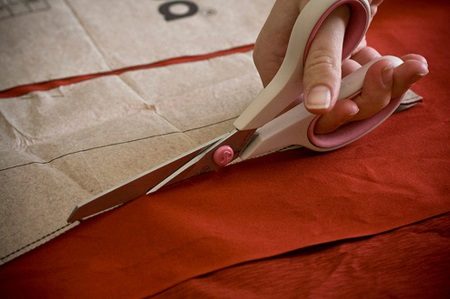
Cut
Cut out from duchess details in the amount of:
- bodice front - 1;
- backless bodice - 2;
- finishing detail with folds - 1;
- shoulder strap - 2;
- the front canvas of the skirt with a fold - 1;
- rear canvas skirts with a fold - 2;
- top skirt - 1;
- belt 8 cm wide (finished 4 cm) and length depending on your size. For example, for the 36th, the length will be 74 cm, 78 cm for 38 sizes, etc. Of these, 3 cm is an allowance for the fastener.
From the lining fabric, 1 part of the middle part of the front bodice with a fold and 2 parts of the side and middle parts of the back bodice, as well as 2 parts of the side part of the front bodice are cut out.
Duplicate lining details with non-woven.
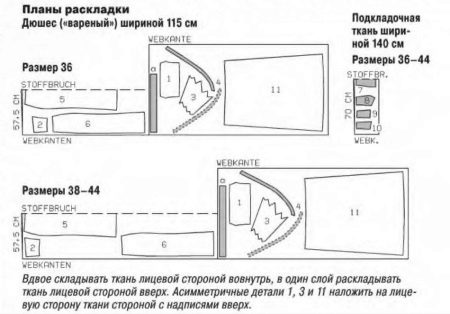
Sewing
- Stitch tucks on the front bodice.
- In the finishing part, lay the folds in the direction of the arrow marks and notice below and above. Do not iron folds. Then baste the one-piece trim. Put the finished element on the bodice according to the marking and notice open sections.
- Stitch the side details of the front and back of the lining fabric with the center. Emboss embossed seams as scraps.
- Cut from strips with corsage sticks (regilina) 7 and 11 mm wide, 2 pieces of the desired length. The narrow regeline is designed for embossed seams of the front, the wide one is for the back. Pull into the wings, then fasten with a stitch. The upper ends of the tapes should lie 5 mm below the marked line of the upper edge.
- The details of the back and front of the duchess pads and lining sew down the upper cut.
- Sew on the strap. Put its front end on the front bodice from the right side cut, aligning the lower edge with the marked alignment line. Sew the bottom edge of the strap with hidden stitches. Sew the straps from the wrong side under the upper edge of the front bodice, without putting the needle on the front side.
- On the bodice of the dress, make side seams. From the tape with corsage sticks 11 mm wide, cut 2 pieces of 18 cm. Stitch them to the edge on the underside of the side seam allowances at a distance of 5 mm.
- Sweep the rear end of the strap into the lower section of the left upper back. Try on the bodice of the dress and adjust the strap.
- Stitch tucks on the back halves of the skirt, then the side seams. Combine the finished skirt with the bodice.
- Sew in a hidden zipper, while leaving the upper ends free. From the end of the zipper to the bottom, make a middle seam on the back. Tighten the free ends of the zipper and sew along with the allowances to the upper edge of the dress.
- Press the hem and hem hem manually.

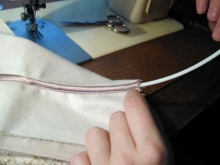
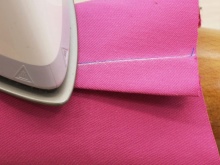
Top skirt
- Bend the bottom of the removable skirt, first ironing the edges, and then manually sewn. Iron the side sections and stitch them to the edge.
- On the upper cut, lay the folds and bind.
- Take the rep ribbon and tuck one end of it by 1 cm and iron. From the bend, measure the length depending on the size. Sew the tape to the top cut of the removable skirt.

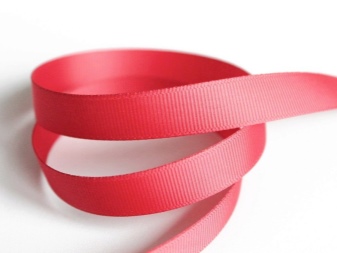
Belt
- Fold the belt in half and grind the slices, while leaving a small area open for turning out. Having turned out a belt, iron the edges. Then sew the open area. Close the belt on the Velcro tape.
- Lock the removable skirt on the belt with the buttons. Sew the lower parts of the 5 buttons on the front side of the rep belt. Sew the first button at the ends of the belt, place the rest at the same interval.
- Close the belt and pin it to the rep belt of a removable skirt, aligning the ends of the belt with the line of the middle of the back.
- On the belt, mark the tops of the buttons. Sew them.
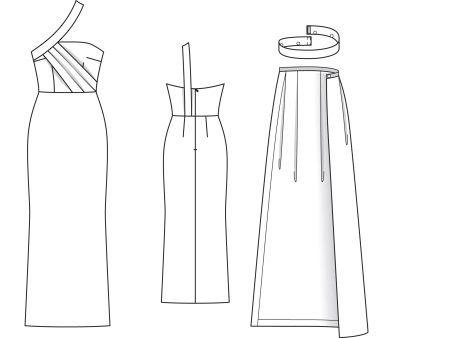












Thanks for the pattern! Everything is clear and accessible)